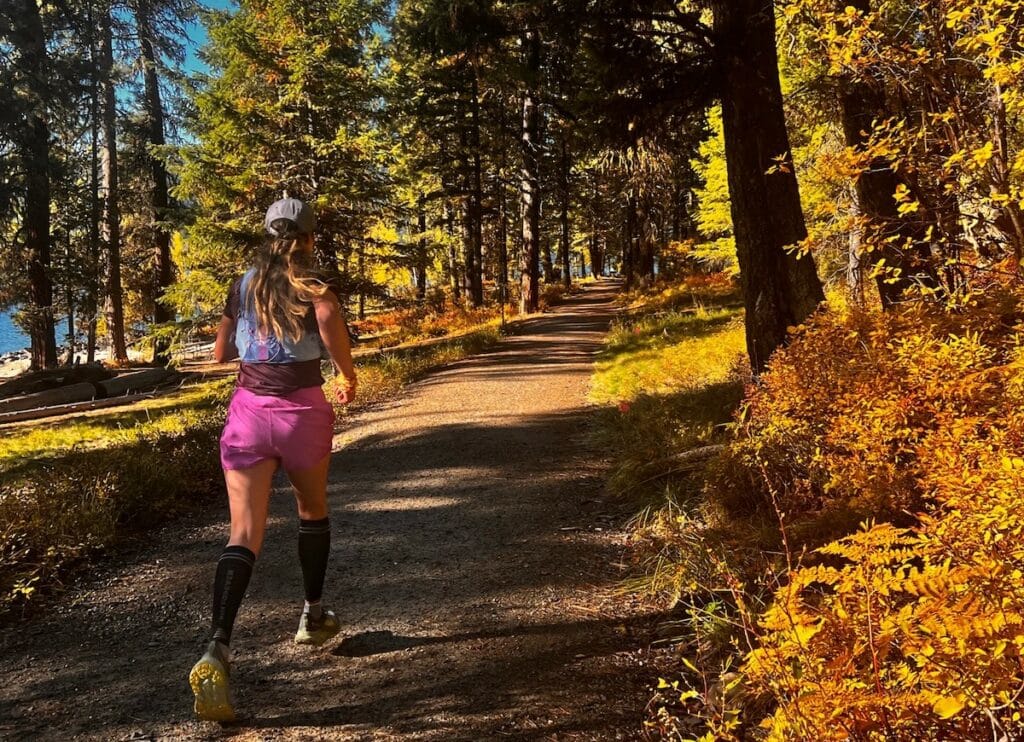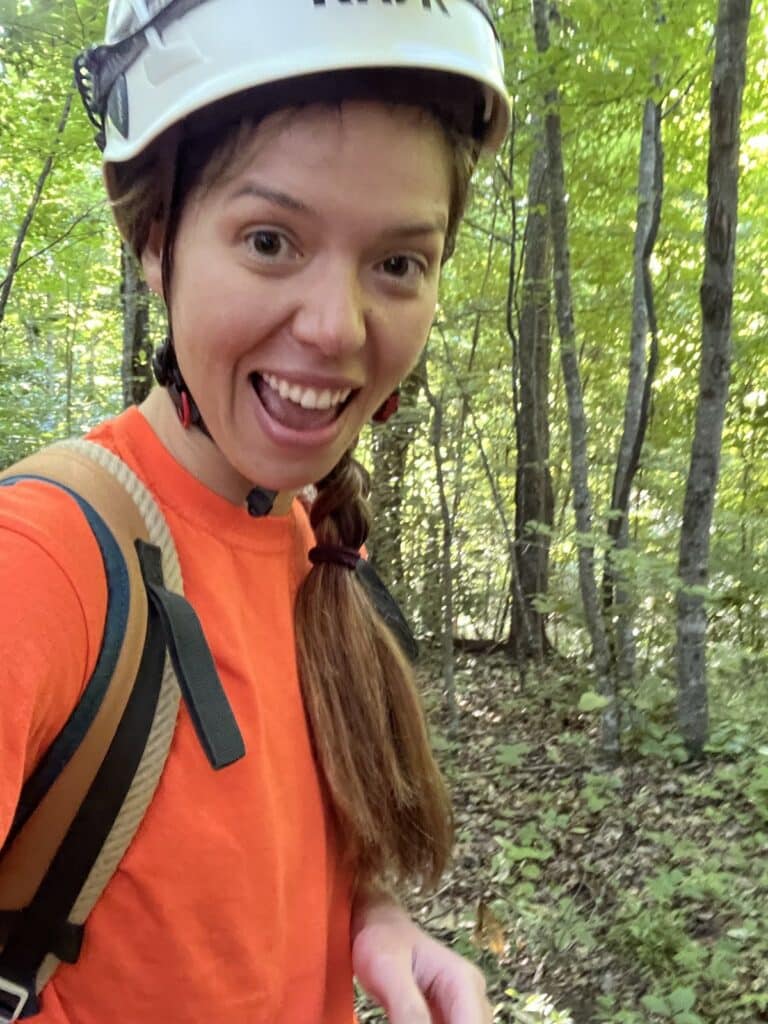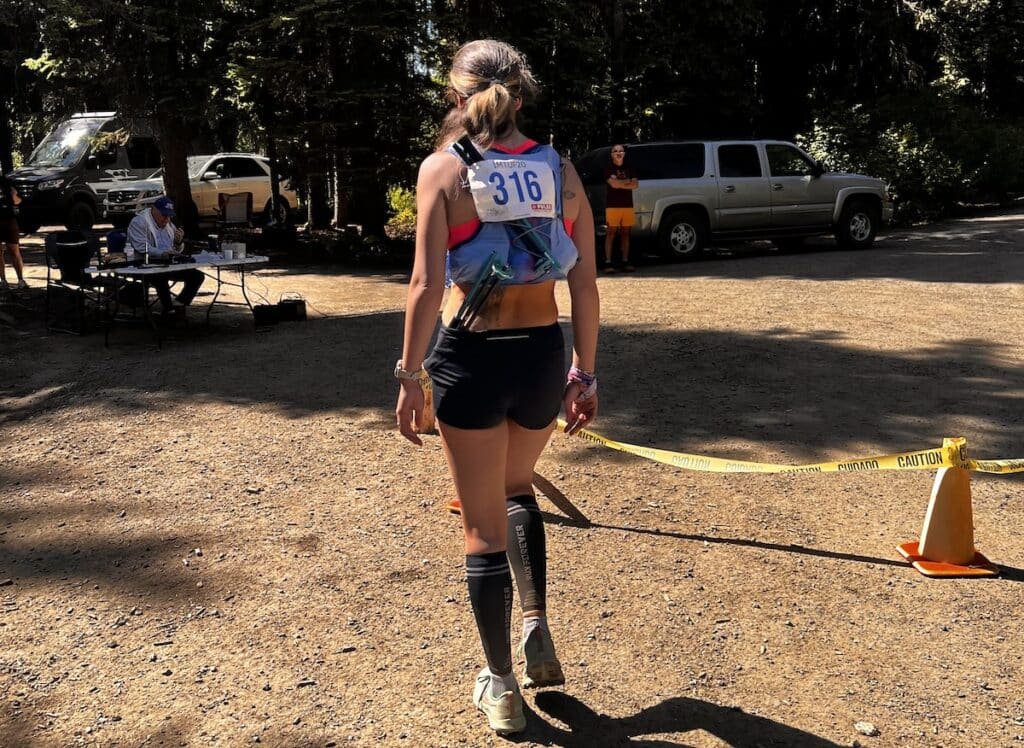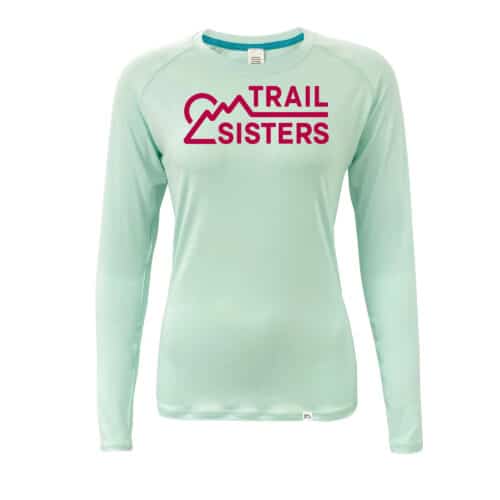Main Menu
5 Things Your Search and Rescue Team Wants You to Know

Crystal Mahoney lives in Louisville, KY and McCall, ID with her husband, step-daughter, and two fur babies. She grew up in Los Angeles and New York. She worked as an outdoor guide prior to going to law school but her passions will always be in the wild. Crystal loves trail racing in Idaho, but also loves training, climbing, and volunteering in Kentucky. She enjoys travel, rock climbing, backpacking, camping, paddle boarding, kayaking, writing, and being a parent to an amazing kiddo.
Share This Article!


By: Crystal Mahoney
It’s 5:00 am and I’m cruising to classic rock through the rolling hills of Eastern Kentucky as I make my way two and a half hours to the Gorge on a cold morning. The thick white mist rising off of the fields threatens to swallow up the headlights on my SUV and I’m guided forward by muscle memory, the strong black coffee in my travel mug, and the taillights of climbers that didn’t quite make it to Mig’s last night. Every weekend for the past six years that I’ve lived in Louisville, I’ve headed to Muir Valley or PMRP or any number of crags with sport climbing. Every weekend I wake up to a blue dawn, count my quickdraws and slings, grab a Cliff bar and a few liters of water, pack my headlamp, my harness, my rope, my gri-gri, my first-aid kit, and my climbing shoes before kissing my big goofy dog goodbye. The Red River Gorge of Kentucky has been my escape from the pressures of being a female litigator in a male dominated industry, being a step-mom in a toxic co-parenting relationship, being a tall AAPI woman living in the South, and being the committed wife of a partner with an ever rotating schedule. All of these stressors fade into the mist as I put a hundred miles between me and the city, and then another hundred between me and the ground.
But today is not about me. The bright orange t-shirt that I’m wearing is emblazoned on the back with the black letters Search and Rescue. It reminds me that I am not only a climber and trail runner, but I’m part of a very different kind of tribe here in the Gorge. A tribe of men and women whose motto is, “So that others may live.”
I went on my first solo backpacking trip to Alaska when I was 16 after being inspired by my ultrarunning vegetarian environmental science teacher. At the time I thought he was mildly insane for running 100 miles, but the backpacking treks he talked about spoke to me. I read Into the Wild a hundred times that year and was hit with an existential quest for meaning so powerful that it didn’t matter that I had never even been backyard camping before. That first solo into the Chugach National Forest led me to a love of all things natural and wild, and then to a career in professional mountain guiding in my 20s. It led me to the Wilderness Medicine Institute and the National Outdoor Leadership School in North Carolina and Washington. It led me to this team of rescuers and a lifetime of wilderness self-sufficiency. In the three years since I’ve been welcomed into this search and rescue family, I have become a certified Rope Rescue technician, a Basic Search and Rescue technician, a Swift Water Rescue technician, and a Wilderness First Responder. I have trained under Kentucky Emergency Management in land navigation, lost person behavior, and rappelling. I’ve jumped from a speed boat and hauled a man twice my size across a lake. I’ve learned the mechanics of hoisting a litter basket a hundred feet up the side of a cliff to rescue a fallen climber. I have responded to car wrecks, seizures, and countless lost hikers. I’ve spent hours looking for lost flood victims in mud up to my thighs. I’ve witnessed houses broken apart and thrown off their foundations. I’ve watched my fellow search and rescue volunteers take tree limbs to the eyes, take falls that broke their backs and ribs, hang from helicopters, and stay out all night in ice rain… so that others may live. I have the honor of serving as a volunteer next to some of the bravest and kindest people on earth. And I’ve witnessed the toll it all takes on my team. The good days are rescues and the bad days are recoveries.
And today, we’re on standby for a local ultra-race. I love trail running, testing my own mileage limits, and cheering on my partner as he tackles his own demons in races. I love toeing the start line and running until those same toenails are black. But I can’t say I’m particularly excited for this event because in my experience as a race search and rescue volunteer these days are long: they’re filled with people who want band aids and yell at you for bad sign directions when they feel like their PR is at risk; people who feel ungrateful for your aid while you treat them after puking their gels up; people who want immaculate trails, but never volunteer for a trail day or donate to the causes of small Appalachian communities. But my team is here, because these are also the days of broken ankles, heart attacks, heat strokes, and dehydration. These are the days people run themselves straight off a bush covered trail and down 50+ feet of mountainside because they think all wilderness will also be well marked. It’s our duty to come get you, so it’s faster that we’re here waiting. Race days are safer because taking your “I haven’t slept in 30+ hours attitude” in stride, but what do you do when we’re not there? How do you prepare so that you don’t put your life, my life, and my team in danger?

I love spending every day lifting weights, climbing, swimming laps, and trail running. Running to train for rescues and races alike. But I’d also love it if fewer people needed rescuing. I wish you would plan ahead and prepare, even if it makes your hydration vest heavier. So here are my five key tips on what you can do to make it safer for everyone out there.
- Carry an emergency GPS device and make sure you know how to use it. I recommend the Garmin Messenger or Garmin InReach if you don’t have a watch that can send an emergency signal away from cell service. These devices also typically come with a discount for emergency rescue insurance which I highly recommend to help cover the cost of a helicopter evacuation should your rescue team deem it necessary. Also, please learn and test how to send emergency messages to and from your devices, and make sure your device is turned on when you are leaving the house. The best devices will have an easy to access SOS button somewhere that you can activate if you fall or get lost. When you have a broken femur it is a bad time to learn that you didn’t download the corresponding app to your GPS device. When you are being followed in the woods it is a bad time to remember that your Livetrack was sent to your mom’s old email that she never checks. Our team rescues enough injured hikers, runners, climbers, and hunters every year that all say, “if I hadn’t gotten this for the holidays, I would have died out here” so add it to your list!
- Share your plans. Please tell someone where you are going- a spouse, a parent, or a close friend. Tell them when you are going and when you are expected home, and most importantly tell them the trails you are going to take or the few options that you are contemplating. Share your location with a trusted person when you are driving out of cell service and save a pin to your phone of where you are parked. Share your race packet info if you are doing recon before a race. These are all tools that a search and rescue team can use to find you. A caveat for female solo safety here though, only share your Strava or Google location with those people you trust and do so privately- I’m not big on public platforms where someone can stalk you. Also, once you realize you are lost, and send your SOS, please stay still so we can find you. When you signal, then move, we start playing the very un-fun version of hide and seek, and your odds of being found decrease. If you move out of necessity, send another SOS signal.
- Carry an emergency bivvy sack or space blanket. I know you think I’m joking at this point because if it’s not Required Gear then you’re not carrying extra weight. But I’m telling you, this piece of equipment can save your life. There are plenty of cheap disposable options that fold down to less than 4 inches and weigh less than 4 oz. This one small piece of equipment will protect you from hypothermia and can shield you from the elements. Most people are unaware that even when you send an emergency rescue signal, it may be 30 minutes before it is received, but it could be hours before anyone can get to you. Hypothermia can set in within minutes if you’re not dressed in anything more than shorts, a sports bra, and a sweaty shirt, and most hypothermia deaths occur between 30 and 50 degrees Fahrenheit.
- Carry a headlamp and a piece of reflective… anything. I know you truly believe you’re only going out for a morning run on a well-marked and popular trail, and that you’ll be home before you even need that extra gel (that I also hope you’re carrying). I’ve met plenty of hunters, hikers, and mountain bikers who said the same thing and ended up on the side of an unmarked unpopulated trail in the dark just a few miles from where they intended to go. Most of the time people need rescuing when it’s dark. It’s human nature that people completely and utterly panic once the darkness starts settling in over the trees and they haven’t found their way back to the trailhead. The panicking won’t help the situation, but the headlamp you’re carrying will. It will also make it so much easier for a search and rescue team to find you in the dark. If you’ve fallen and are injured, then I am bushwhacking through thick rhodo bushes while straining my eyes for your headlamp, and looking for any piece of reflective clothing you may have on. My headlamp will light up your reflective clothing even if it’s raining or dark, so help me help you.
- Get a hydration vest with a whistle on it. Similar to the above tip, when I am looking for an injured person, I am listening for any sounds they are making. You may be yelling for so long that you will be hoarse by the time I arrive. You may be so dehydrated your lips crack when you open your mouth to scream. So I want you to lean forward and blow the whistle that should be built into the clip of your hydration vest at the front. If you don’t have one, I want you to buy a pealess whistle (because that kind can get wet and still work) and attach it to the OUTSIDE of your running vest or backpack. It won’t help you if you can’t find it in the bottom of your backpack.

About the Author

Crystal Mahoney lives in Louisville, KY and McCall, ID with her husband, step-daughter, and two fur babies. She grew up in Los Angeles and New York. She worked as an outdoor guide prior to going to law school but her passions will always be in the wild. Crystal loves trail racing in Idaho, but also loves training, climbing, and volunteering in Kentucky. She enjoys travel, rock climbing, backpacking, camping, paddle boarding, kayaking, writing, and being a parent to an amazing kiddo.
Share This Article!











